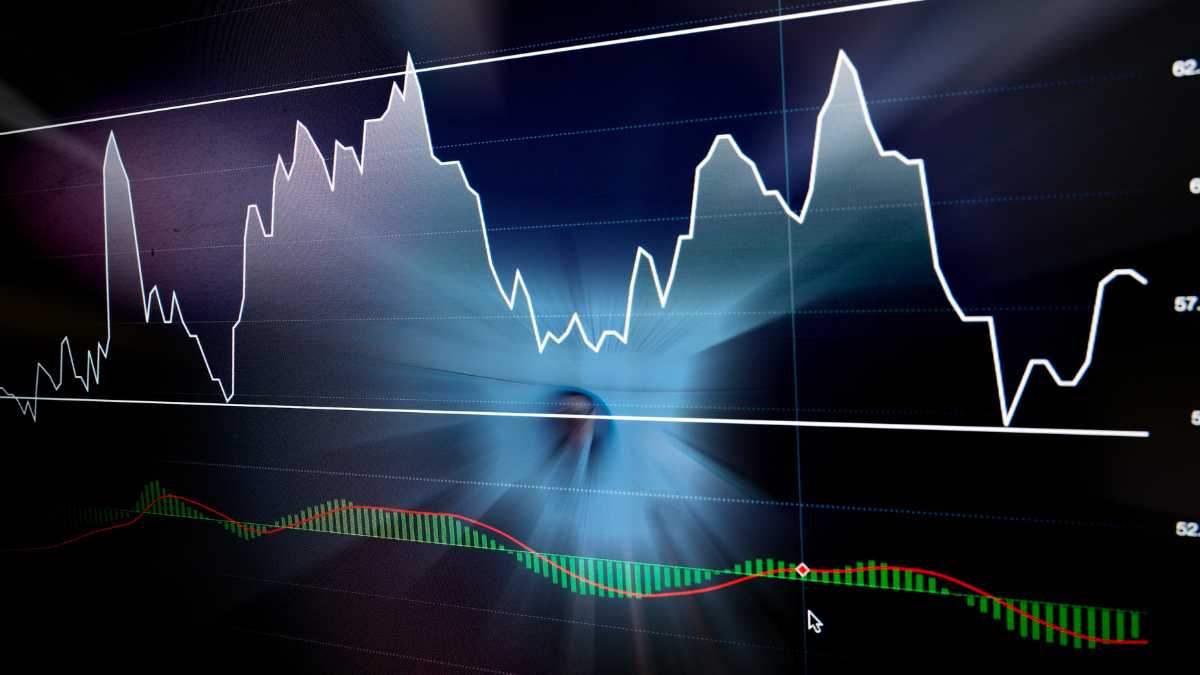Friday Feb 2 2024 09:47

9 min
The Moving Average Convergence Divergence (MACD) indicator is a powerful technical analysis tool that can help traders spot trends and make money. However, it is not without its flaws. It can react quickly to price changes, so traders should use it in conjunction with other indicators such as RSI.
MACD uses two lines, the MACD line and the signal line, and a histogram (a graphical representation of the distance between them). The histogram is a useful tool for identifying positive crossovers and rapid rises in momentum.

The MACD calculation combines two exponential moving averages (EMA) to generate a trend indicator. The longer-term EMA is subtracted from the shorter-term EMA to create a line graph known as the MACD line.
A signal line is also used to smooth out the sensitivity of the MACD line and provide a baseline for buying and selling signals. The 12, 26, and 9 values for the MACD line and Signal line are the most common, but traders can adjust these time spans to fit their particular investment strategies.
The MACD can be useful in identifying trends, but it can also generate false signals. It is important to learn how to read the indicator correctly and apply it to your trading strategy.
The Moving Average Convergence Divergence (MACD) is calculated using the following formula:
MACD Line = EMA 12 days − EMA 26 days
Where:
Additionally, the MACD indicator is often accompanied by a signal line, which is the EMA of the MACD itself, typically over 9 days:
Traders look for the crossover of the MACD and its signal line to identify potential buy or sell signals. The difference between the MACD and its signal line is often plotted as a histogram, which can also provide visual cues about market momentum and potential trend reversals.
MACD is an indicator that is used by traders to identify trends. It is based on two exponential moving averages with different period lengths and shows the trend direction by calculating how close or far the two moving averages are. Traders can combine MACD with other technical analysis tools to increase the accuracy of its signals.
The MACD indicator is made up of three general components: the MACD line, the signal line, and the histogram. The MACD line is calculated by subtracting the long-term EMA (26 periods) from the short-term EMA (12 periods).
The signal line is then calculated by taking the nine-day EMA of the MACD line and adding it to the MACD line. The histogram is the difference between the MACD line and the signal line. When the MACD line crosses above the zero line, it is a bullish signal. When the MACD line falls below the zero line, it is a bearish signal.

The MACD is a momentum indicator that helps traders spot trends in the market. It lags behind price, however, as it is based on moving averages (past data). This can cause traders to miss important signals. It can also lead to a whipsaw, which occurs when the prices of stocks move in one direction for a while and then suddenly change directions.
To avoid this, it is recommended to use MACD in conjunction with other indicators such as the ADX, support and resistance levels, and volume analysis. Traders should also look for divergences in the MACD line and histogram to identify reliable buy/sell signals.
For example, a MACD/signal line crossover that is accompanied by a positive histogram suggests that upward momentum is building. A negative histogram, on the other hand, indicates downward momentum.
The MACD indicator lags the actual price movement of security because it uses historical data. The indicator consists of two moving averages: a fast EMA of 12 days a slow EMA of 26 days and a 9-day EMA of the difference between them.
Traders can use the MACD to identify trends and to predict the direction of future price movements. MACD signals include crossovers, divergences, and rapid rises and falls in the indicator. The MACD histogram is a bar graph that plots the MACD line and signal line.
MACD can be used to detect trend changes and potential reversals in an asset’s price, but it should be analyzed along with other technical indicators. It also tends to produce false signals, especially with volatile assets. This can lead to overtrading or confusion. Using longer periods in the calculation of the MACD can help to mitigate this issue.
The MACD is a momentum indicator that helps traders identify trade reversals. It uses two lines that oscillate without boundaries to give trading signals.
The signal line is a 9-period exponential moving average of the MACD line itself, and the histogram is the difference between the MACD and the signal line. The histogram bars grow wider when price movement accelerates and shrink when it slows down.
When the MACD line crosses above the signal line, this is a bullish sign and suggests that prices are rising. Conversely, when the MACD line falls below the signal line, this is a bearish sign and indicates falling prices.
Traders can also use the MACD to predict trend direction and market entry points. For example, when the MACD histogram shows a series of higher lows while the price chart is making lower highs, this is a bullish divergence and can indicate a possible trend reversal.

MACD is a popular indicator used by traders to identify potential reversals in market trends. It uses the concept that a faster moving average will cross above a slower moving average when a trend is about to change, and vice versa. Traders look for crossovers between the MACD line and the signal line to enter or exit their positions.
However, the MACD is a lagging indicator that requires confirmation of future price movement before taking action. It also depends on historical data, which may not always indicate future price movements, leading to false signals.
Traders should avoid using MACD as their sole trading tool. The indicator can generate false signals in volatile markets and during periods of consolidation, which can lead to losses if a trader relies on it too heavily. In addition, MACD can produce "whipsaw" movements, where the stock moves sharply in one direction and then slows down in the other direction.
Become a member of markets.com and access a cutting-edge trading platform.
“When considering “CFDs” for trading and price predictions, remember that trading CFDs involves a significant risk and could result in capital loss. Past performance is not indicative of any future results. This information is provided for informative purposes only and should not be considered investment advice.”